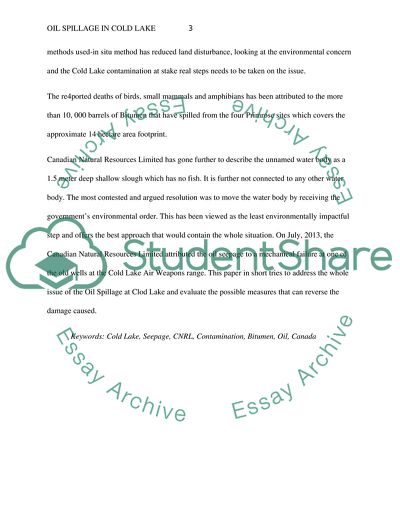Cite this document
(Oil Spillage in Cold Lake Term Paper Example | Topics and Well Written Essays - 3750 words, n.d.)
Oil Spillage in Cold Lake Term Paper Example | Topics and Well Written Essays - 3750 words. https://studentshare.org/environmental-studies/1815277-oil-spillage-in-cold-lake
Oil Spillage in Cold Lake Term Paper Example | Topics and Well Written Essays - 3750 words. https://studentshare.org/environmental-studies/1815277-oil-spillage-in-cold-lake
(Oil Spillage in Cold Lake Term Paper Example | Topics and Well Written Essays - 3750 Words)
Oil Spillage in Cold Lake Term Paper Example | Topics and Well Written Essays - 3750 Words. https://studentshare.org/environmental-studies/1815277-oil-spillage-in-cold-lake.
Oil Spillage in Cold Lake Term Paper Example | Topics and Well Written Essays - 3750 Words. https://studentshare.org/environmental-studies/1815277-oil-spillage-in-cold-lake.
“Oil Spillage in Cold Lake Term Paper Example | Topics and Well Written Essays - 3750 Words”. https://studentshare.org/environmental-studies/1815277-oil-spillage-in-cold-lake.


